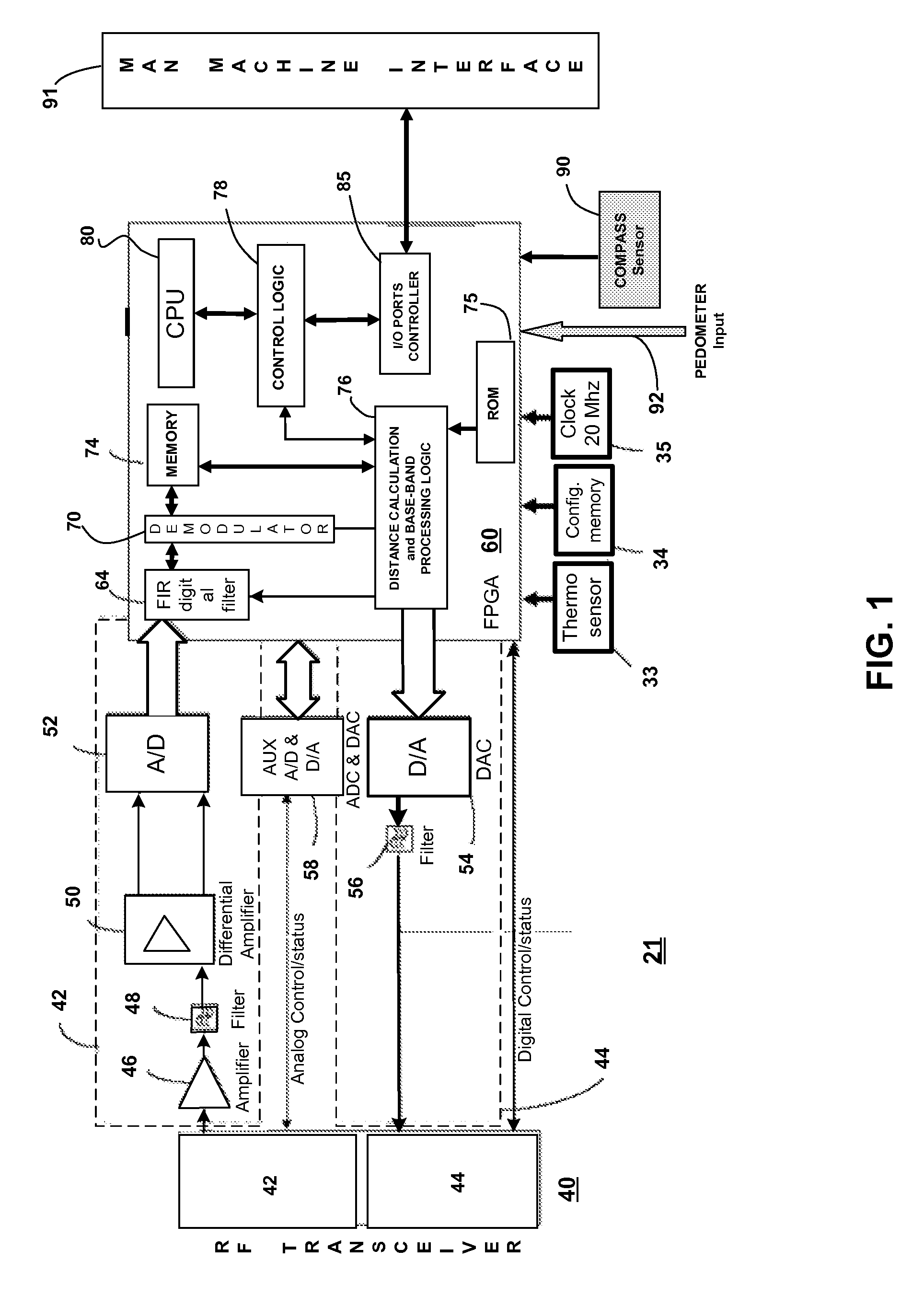Method and system for positional finding using rf, continuous and/or combined movement
a positional finding and positional technology, applied in the field of radio frequency tracklocation systems and techniques, can solve the problems of inconvenient operation environment, inconvenient use of conventional methods and systems, and inability to find, track and locate people. fixed signals require additional devices and installation costs, and the effect of reducing the cost of installation
- Summary
- Abstract
- Description
- Claims
- Application Information
AI Technical Summary
Benefits of technology
Problems solved by technology
Method used
Image
Examples
Embodiment Construction
[0020] Reference will now be made in detail to the preferred embodiments of the present invention, examples of which are illustrated in the accompanying drawings.
[0021] The search methods described herein enable one Master Unit to determine the location of an object or person that has a Tag (e.g., an RFID Tag) located on the object or person. The system can locate the object that has a Tag thereon. Master Units can be used to track, locate, and monitor persons and objects equipped with a Tag and / or another Master Unit. The search methods enable a variety of compact and reliable RF-based location and tracking devices that can monitor and track the exact location of multiple objects. The system typically includes two primary components—a Master Unit and a Tag (sometimes also referred to as “Target”).
[0022] A Tag includes an RF transmitter that, when activated by the Master Unit, broadcasts a unique, identifying RF signal. The Tag can be attached to or embedded in frequently lost obj...
PUM
 Login to View More
Login to View More Abstract
Description
Claims
Application Information
 Login to View More
Login to View More - R&D
- Intellectual Property
- Life Sciences
- Materials
- Tech Scout
- Unparalleled Data Quality
- Higher Quality Content
- 60% Fewer Hallucinations
Browse by: Latest US Patents, China's latest patents, Technical Efficacy Thesaurus, Application Domain, Technology Topic, Popular Technical Reports.
© 2025 PatSnap. All rights reserved.Legal|Privacy policy|Modern Slavery Act Transparency Statement|Sitemap|About US| Contact US: help@patsnap.com



